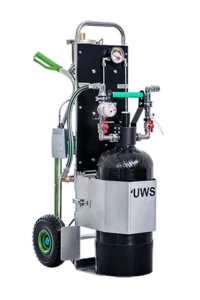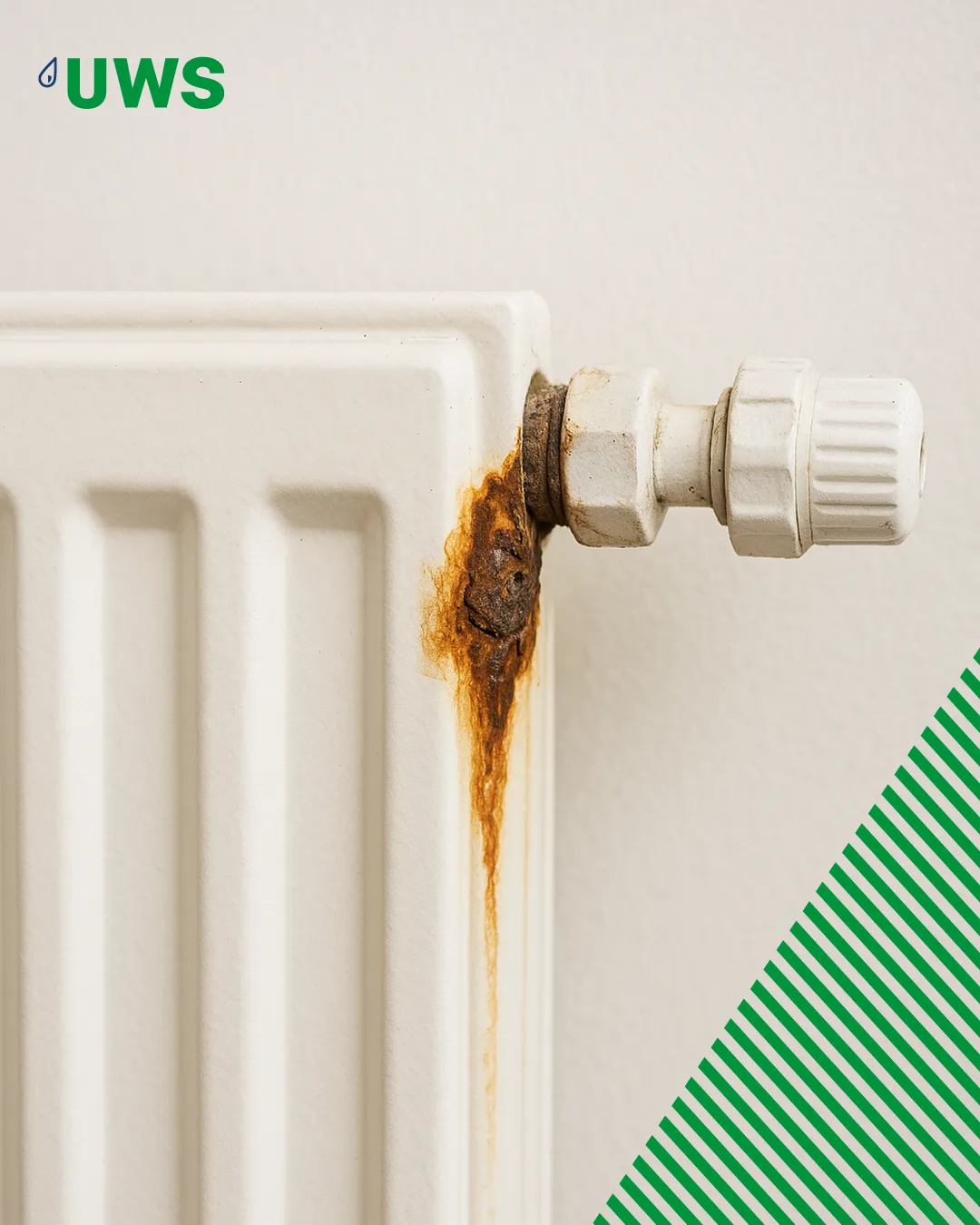Why softening alone is not enough – What you really need to know about conductivity in heating water
Softened water is not automatically good heating water. Anyone planning, installing or maintaining systems must be aware of this: softening removes hardness formers – but not the ions that are responsible for corrosion. The electrical conductivity remains the same or even increases slightly. This starts a gradual process that attacks heat exchangers, pumps and pipes in the long term.
The result: damage, downtime, complaints – and in the worst case: loss of the manufacturer’s warranty.
If you want to minimize such risks, you must not only soften the heating water, but also specifically desalinate. Why? We explain this step by step here.
Softening: Well-intentioned, often too short-sighted
Classic softening works with an ion exchanger: calcium (Ca²⁺) and magnesium ions (Mg²⁺) are exchanged for sodium ions (Na⁺). This makes the water “soft” and prevents limescale formation.
But: The sum of the dissolved salts remains the same – the electrical conductivity hardly changes or even increases.
What that means for you:
- The risk of corrosion remains – especially in mixed installations with aluminium or galvanized steel.
- The limit values of VDI 2035, in particular those for conductivity (≤ 100 µS/cm) for sensitive materials, cannot be achieved with softening alone.
- Although the water is “limescale-free”, it is not automatically compatible with the system.
Conductivity = risk
The conductivity of the heating water is not an abstract laboratory value – it determines the electrochemical potential in the system in very real terms. And this potential determines whether aluminum decomposes, steel corrodes or black sludge forms.
Typical scenarios from everyday life:
- Aluminum heat exchangers show pitting after a few years – even though decalcified water was used.
- In a multi-metal system with plastic, copper, steel and aluminum, the conductivity increases steadily due to softened water replenishment – corrosion is inevitable.
- Complaints are piling up – even though “only good drinking water from the tap” was used.
The fact is that anyone operating a heating system today must have electrical conductivity under control – permanently.
Softening vs. desalination: a direct comparison
| Criterion | Softening | Desalination |
| Removes limescale formers | ✅ Yes | Yes ✅ Yes |
| Removes chloride, sulphate, nitrate | ❌ No | ✅ Yes |
| Reduces the conductivity | ❌ No / slightly increased | ✅ Yes – well below 100 µS/cm possible |
| Corrosion protection | ⚠️ Limited | ✅ High |
| VDI 2035 compliant | ❌ No | ✅ Yes |
| Suitable for mixed installations | Problematic | Yes ✅ Yes |
Why desalination is superior in practice
Complete demineralization with mixed bed resin removes all ions – not only the hardness formers, but also chlorides, sulphates and nitrates. This reduces the electrical conductivity to below 100 µS/cm, drastically reducing the likelihood of corrosion.
This is not a theory – this is the difference between safe operation and regular service calls due to water problems.
With our mobile and stationary solutions, this standard can be achieved easily and economically – even during ongoing operation in the bypass process.

Heaty Ferriline No. 2
Complete unit for professional bypass treatment, sludge and magnetite filtration in the hot water area incl. MAGella twisterTo the product
Common mistakes made in practice
- Softening without conductivity control
- Make-up via the domestic water connection without system separator
- No documentation of the water values during commissioning
- No retrofitting of existing systems with mixed materials
- No need to regularly check the pH value and conductivity
What does it cost? Often several thousand euros – plus trouble with customers and manufacturers.
The right solution: desalting & controlled replenishment
If you want to be on the safe side, you should not only rely on desalination – but also on a compliant make-up solution in accordance with EN 1717.
Because every top-up with unsuitable water changes the water chemistry in the system – quietly and silently, but constantly.
Our solutions:
🔧 Compact make-up units with:
- System separator BA
- Water meter
- Filling combination with mixed bed
- Optionally with digital monitoring and alarm messages
Find out more here: Professional make-up systems according to VDI 2035
The UWS timetable for standard-compliant heating water
- Carry out water analysis
– with the digital WaterBoy dual measuring device (pH value & conductivity) - Use mixed bed resin – which simultaneously desalinates and regulates the pH value
– mobile or stationary, also possible in bypass – More information here: Heating water treatment – according to VDI 2035 - Document values
– for later tracking - Secure make-up in accordance with standards
– using a permanently installed make-up unit, e.g. Heaty Complete Advanced or Heaty Complete PROfessional - Regular checks
– pH value, conductivity, total hardness (e.g. during maintenance appointments) - Replace resin in good time
– for consistent water quality
Conclusion: If you only soften, you leave the door open to corrosion
Today, heating water must be able to do more than just be limescale-free.
Conductivity is one of the decisive levers for corrosion protection, system safety and compliance with standards.
Our recommendation for professionals:
Rely on desalination instead of softening.
Use our tried-and-tested solutions to treat heating water in accordance with standards and safeguard it in the long term. This will not only save you trouble, but also secure your systems in the long term – both technically and legally.



